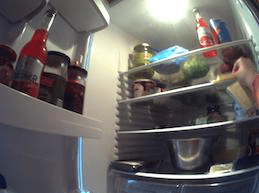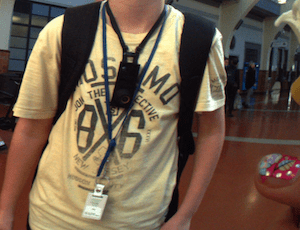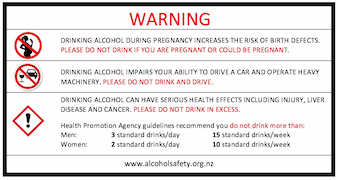
There is an established evidence base showing that children’s exposure to alcohol marketing is associated with adverse outcomes, including intentions to drink, early onset drinking, and hazardous drinking.
In a recent study, published in the Journal of Studies on Alcohol and Drugs, we found that New Zealand children are exposed to alcohol marketing via product packaging on average 7.7 times per day. Product packaging contained limited health information and lacked distinctive features that could provide visual cues to children to differentiate alcohol from other commodities. Rather, in some cases, products had packaging more akin to soft drinks or health drinks.

Confectionary-looking |
Many had features that contradict the self-regulatory guidelines on alcohol marketing in New Zealand, which stipulate that product packaging should not have “evident appeal to minors or . . . create confusion with confectionary or soft drinks”. Further, the use of health imagery distorts the risks of alcohol consumption, particularly in the absence of effective health warnings.

A child wearing devices |
We fitted 168 New Zealand children between the ages of 11 and 13 with cameras and sent them out to record what they saw across four days. Each camera captured an image every seven seconds, giving us 700,000 images of their lives, which were coded manually using a custom-built software.
This current paper builds on previous research from the same study that showed children see an additional 4.5 alcohol ads per day on average, primarily through sports sponsorship and shop front signage. Further, that children are also exposed to alcohol marketing on 85% of all their visits to supermarkets despite legislative provisions aimed at preventing such exposure. Collectively, these findings highlight the urgent need for government regulation of alcohol marketing that covers the full range of marketing media, including product packaging, utilised by the alcohol industry.
Product packaging is an important aspect of alcohol marketing strategies which contribute to children’s overall exposure. Research has also shown children’s perceptions of alcohol are primarily based on the product’s packaging. However, most alcohol packaging contains limited information about the risks of alcohol consumption and lacks features that differentiate it from an ordinary commodity. This is pertinent given the link between alcohol and a number of cancers, with a recent study estimating the cancer risk of consuming a bottle of wine a week is equivalent to smoking 5 and 10 cigarettes for men and women, respectively.
While product packaging is used by the alcohol industry to market alcohol, it is also an opportunity for health promotion if effective health warnings can be implemented. In light of the evidence of children’s perceptions and reactions to tobacco health warnings on packaging, it is likely that similar warnings could influence children’s perceptions of alcohol and awareness of the risks associated with alcohol consumption.
Ireland has recently enacted legislation for mandatory health warnings on alcohol packaging that, among other requirements, enforce the display of cancer warnings, a policy action that is supported in the UK via recommendations from the UK House of Lords, Royal Society for Public Health and Public Health England. Given the similarities between the self-regulatory systems of alcohol labelling in New Zealand and the UK, it is likely our results are generalisable to the UK environment, providing further support for UK action on alcohol labelling.

An example of a warning label |
In New Zealand, a decision from the Australia and New Zealand Ministerial Forum on Food Regulation has led to the development of a mandatory labelling standard for pregnancy warning labels on packaged alcoholic beverages including a pictogram and relevant warning statement. While a step towards improved alcohol labelling, the decision ignores other important health risks posed by alcohol consumption such as cancer and provides no guidance on the size or display of health warnings. A recent NZ study found that 80% of alcohol products already had pregnancy warnings, however these warnings were on average “pea-sized” covering less than 0.2% of the available surface area. The authors proposed a template for a more comprehensive warning label, that if implemented, would improve awareness of the risks posed by alcohol consumption.
Children’s high rate of exposure to alcohol marketing via product packaging as well as low adult consumer awareness of the real risks posed by alcohol consumption support greater regulation of alcohol labelling in New Zealand and beyond.
Written by Dr Tim Chambers, Imperial College Business School, Centre for Health Economics and Policy Innovation (CHEPI)
All IAS Blogposts are published with the permission of the author. The views expressed are solely the author’s own and do not necessarily represent the views of the Institute of Alcohol Studies.
